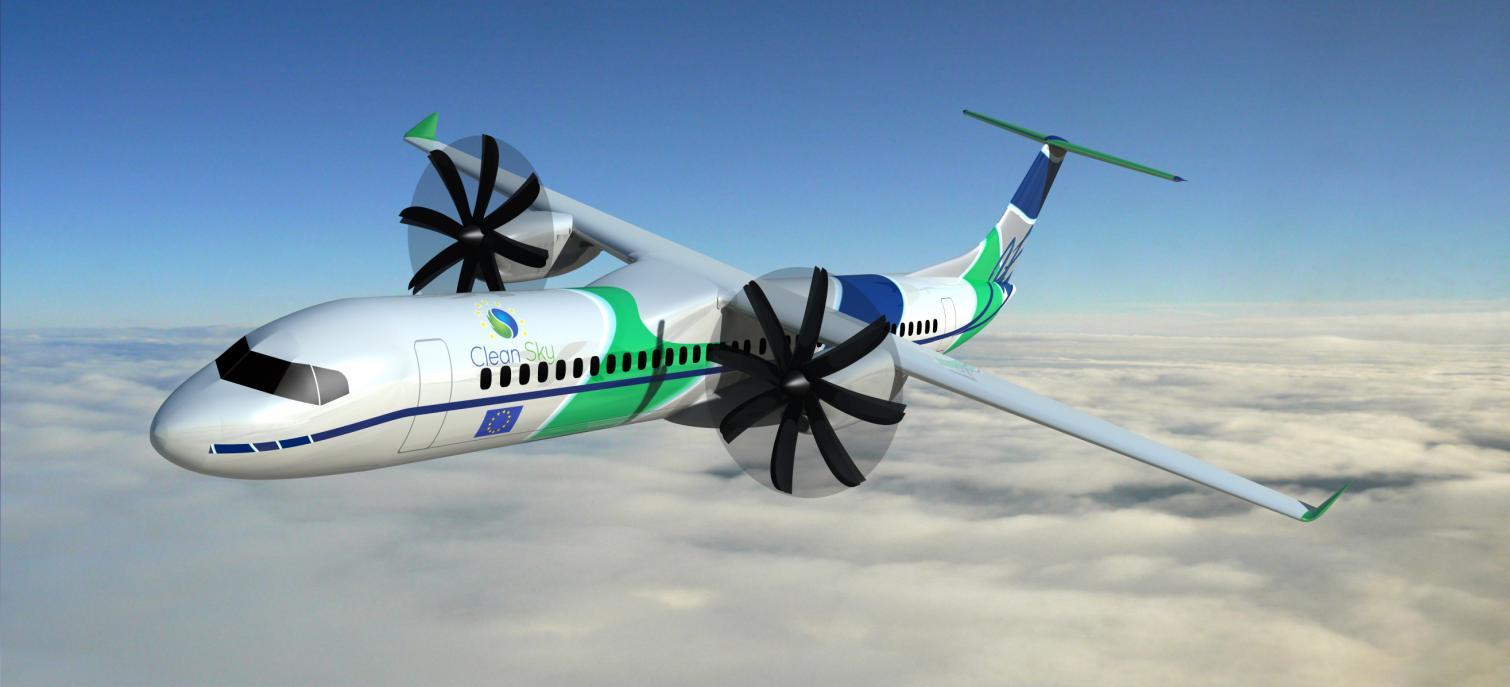
OTTAWA—Leaders of Europe’s Clean Aviation research initiative believe the program is on track to see decreases in aircraft greenhouse gas emissions by 30% within the next decade compared to current-technology airliners, putting the industry on course toward achieving the EU’s goal of climate-neutral aviation by 2050.
“Will we make it? I think yes, technology wise and technically I think we will do it,” says Jean-Francois Brouckaert, chief research officer for the Clean Aviation Joint Undertaking. “We will find solutions; I’m convinced about that. We’ll need good engineers nevertheless and young, bright minds to help us find other solutions when we run out of ideas. But as everybody knows, the clock is running and between now and 2035 is only a short time.”
Brouckaert’s comments, made at the International Society For Air Breathing Engines (ISABE) 2022 meeting in Ottawa, came as the Clean Aviation board announced more than €700 million ($672 million) in funding for 20 sustainable aerospace research projects ranging from hybrid- and hydrogen-propulsion to technologies for ultra-efficient short- and medium-range transport aircraft.
The projects all fall into the initial phase of Clean Aviation, which runs to 2031 and targets the development of technology for introduction in 2035. The initiative builds on previous European public-private civil aeronautics research programs—Clean Sky and Clean Sky 2—and is the largest yet, with a combined government-industry budget of €4.1 billion. The latter effort, which began in 2014, is in its closing stages with around 150 projects due for completion by the end of 2023. The first Clean Sky project began in 2008 and ran through 2017.
The goal of Clean Sky 2 was to see decreases in CO2, NOx and noise emissions by 20-30% compared to 2014 state-of-the-art aircraft. While not all the goals were met, the program is expected to get positive results from a final assessment report due in 2024.
The project also led to the development of Clean Sky’s regional integrated technologies demonstrator, or Flight Test Bed 2, a modified Airbus C295 turboprop that made its first flight in January. The aircraft is expected to reduce CO2 and NOX emissions by 43% and 70%, respectively, while reducing takeoff noise by 45%.
As well as the 30% fuel-burn reduction targeted for short- and medium-range airliners by Clean Aviation, the initiative also aims to see up to a 50% fuel-burn reduction for regional aircraft over the same period. “We no longer talk about CO2 and NOx alone but about greenhouse gases in general, targeting a reduction of 30% versus a 2020 reference. We also want to achieve a fleet replacement of 75% by 2050,” says Brouckaert.
The 20 Clean Aviation projects cover 14 main areas, tackling technology for hydrogen-powered aircraft, hybrid-electric regional aircraft and ultra-efficient short- and medium-range aircraft. “These will define Phase One, which is going to last to 2025-26, and which is meant to develop the key technology bricks for the ground and flight demonstrators. These are expected to take place in the second phase after 2026 and to hopefully achieve a Technology Readiness Level of six by 2030,” he notes.
Rolls-Royce Deutschland and GE Avio have won awards for research into multi-megawatt hybrid-electric propulsion systems. Honeywell plans to study thermal management for hybrid-electric aircraft, while Collins Aerospace Ireland will evaluate electrical distribution systems. Airbus Defense and Space will study an innovative wing design.
Rolls and GE Avio each expects to study direct combustion of hydrogen in turbofans under projects targeting high efficiency and low NOx emissions. Honeywell has received a project to study a multi-megawatt fuel-cell propulsion system, while Aciturri Engineering will work on large-scale lightweight liquid-hydrogen storage tank designs. Pipistrel Vertical Solutions also has been tapped to study fuel cells and tanks for hydrogen-powered aircraft.
Contracts awarded for ultra-efficient short- and medium-range aircraft projects are going to Safran, MTU and Rolls for propulsion systems, and to Airbus for ultra-performance wing designs and studies of advanced low-weight integrated fuselage and empennage configurations. Leonardo and Airbus also will evaluate aircraft concepts targeted at overall emissions reductions of between 30-50%.
“Certification is going to be a challenge and an issue, as everyone knows,” says Brouckaert, who references a contract to Dassault Aviation covering studies of novel certification methods and means of compliance for disruptive technologies. “We have tried to closely involve EASA from the beginning, and we have encouraged every project to do so,” he adds.
Aerospace Valley, a cluster of French aerospace engineering and research companies, also will work to develop a European Clean Aviation Regional Ecosystem.
